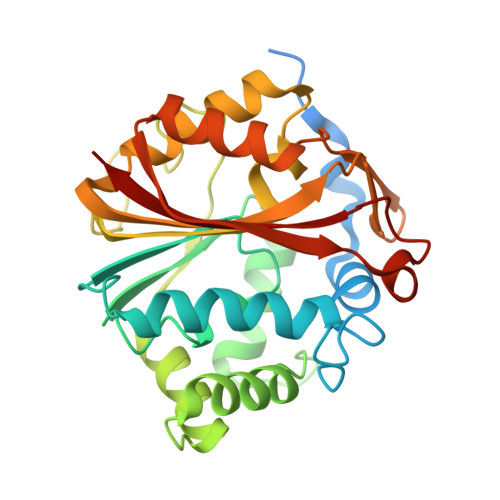Transition-State Analogues of PhenylethanolamineN-Methyltransferase.
Mahmoodi, N., Harijan, R.K., Schramm, V.L.(2020) J Am Chem Soc 142: 14222-14233
- PubMed: 32702980
- DOI: https://doi.org/10.1021/jacs.0c05446
- Primary Citation of Related Structures:
6WS1 - PubMed Abstract:
Phenylethanolamine N -methyltransferase (PNMT) is a critical enzyme in catecholamine synthesis. It transfers the methyl group of S -adenosylmethionine (SAM) to catalyze the synthesis of epinephrine from norepinephrine. Epinephrine has been associated with diverse human processes, including the regulation of blood pressure and respiration, as well as neurodegeneration found in Alzheimer's disease. Human PNMT (hPNMT) proceeds through an S N 2 transition state (TS) in which the transfer of the methyl group is rate limiting. TS analogue enzyme inhibitors are specific for their target and bind orders of magnitude more tightly than their substrates. Molecules resembling the TS of hPNMT were designed, synthesized, and kinetically characterized. This new inhibitory scaffold was designed to mimic the geometry and electronic properties of the hPNMT TS. Synthetic efforts resulted in a tight-binding inhibitor with a K i value of 12.0 nM. This is among the first of the TS analogue inhibitors of methyltransferase enzymes to show an affinity in the nanomolar range. Isothermal titration calorimetry (ITC) measurements indicated negative cooperative binding of inhibitor to the dimeric protein, driven by favorable entropic contributions. Structural analysis revealed that inhibitor 3 binds to hPNMT by filling the catalytic binding pockets for the cofactor (SAM) and the substrate (norepinephrine) binding sites.
- Department of Biochemistry, Albert Einstein College of Medicine, New York, New York 10461, United States.
Organizational Affiliation:





















